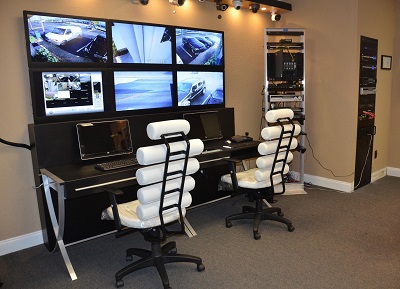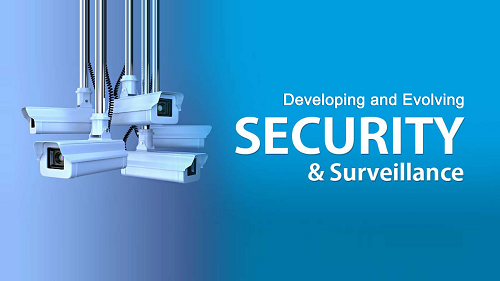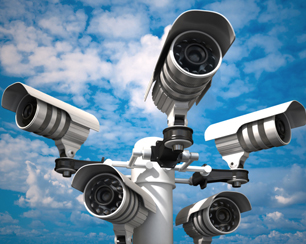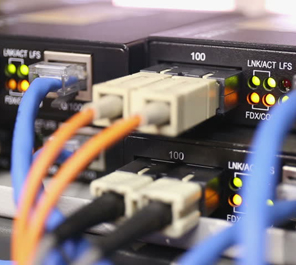Security and surveillance cameras are all around us. Look around and you will find them in virtually every place you go. Some common applications include:
• In retail stores to monitor customer activity and protect against theft
• In small businesses and large corporations for identity verification and physical security both indoors and outdoors
• Throughout intelligent transportation systems for traffic monitoring and emergency dispatch
• On the streets for law enforcement and public safety
As the demand for security and surveillance grows, the advancements in technology have made it possible to implement higher quality devices more easily and in more locations.
Many security professionals are finding that the quality, bandwidth and distance needed to perform even the most basic surveillance are beyond the reach of coaxial and UTP cabling. Due to the inferior transmission quality over coaxial cabling, analog CCTV systems are most effective when cable runs are limited to distances of 185 meters. Despite their many advantages, IP-based video systems also face a serious distance limitation of 100m or less over UTP cabling infrastructure. These limitations create unnecessary challenges when trying to install or monitor the many outlying locations of a typical surveillance network.

The additional provisions required to guarantee the video signal's transmission strength (such as the use of signal amplification, ground fault correction and surge protection) inevitably increase the cost of the system considerably, making alternative cabling methods more attractive. In fact, the use of fiber optic cables will allow for cable runs of 2 kilometers on multimode and even greater distances on single mode fiber. In addition to distance extension, fiber optic cabling also presents a number of other unique benefits not present in either coax or UTP cabling:
① Smaller size and better tensile strength, making it easier to install when pulling through conduit or in overhead cable trays
② High degree of security since fiber is inherently difficult to tap into without detection
③ Immunity to electrical interference such as electromagnetic interference (EMI) caused by external sources like motors and transformers in industrial and power utility applications
④ Immunity to radio frequency interference (RFI) from consumer devices and digital circuits in computer and networking equipment
⑤ Immunity to high voltages found in fluorescent lights, card access door strikes and outdoor lighting systems or induced voltages (ground loops) which cause picture distortion and audio interference
⑥ Higher bandwidth
⑦ Improved reliability and overall transmission performance
Local area networks (LANs) very commonly deploy fiber optic cabling as the network backbone between buildings or in vertical risers of multi-story buildings. Using this existing infrastructure is a logical and economical alternative to making the necessary accommodations for the distance and quality issues common to coax and UTP video systems. The remaining challenge for most video security professionals is how to access this fiber since many cameras and monitors are not available with fiber optic ports and the existing video security and surveillance system was designed and installed with coax or UTP cabling. Sun Telecom offers a wide variety of products to convert electrical video signals to an optical format, allowing you to improve the quality, bandwidth and distance of your existing system.
Whether the need is to extend the distance of an existing network, extend the life of non-fiber based equipment or simply utilize existing fiber optic infrastructure, media conversion can be a cost-effective way to integrate fiber optic cabling into an existing copper or IP-based video security system.


 Position :
Home>
News & Tutorial
>Products
Position :
Home>
News & Tutorial
>Products


 Position :
Home
>Products
Position :
Home
>Products


 ics@suntelecom.cn
ics@suntelecom.cn  +86 18964888554
+86 18964888554 Building No.145, Lane 666 Xianing Road, Jinshan Industrial Zone, Shanghai 201506, China
Building No.145, Lane 666 Xianing Road, Jinshan Industrial Zone, Shanghai 201506, China